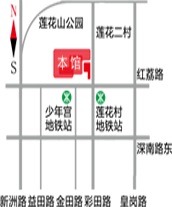
- Shadow of Qingping - Exhibition of Li Qingping's Art Works
-

Click to view Exhibition period: July 29th to August 15th, 2010
Exhibition location: Halls E and D, 3rd floor, Guanshan Yue Art Museum
Organizers: Shanghai Art Museum and Guanshan Yue Art Museum
Preface
Li Qingping was a new woman with a bumpy and unique background in the 20th century, and also an artist forgotten by Chinese art history. Her original surname was Zhao and her name was Yuzhen. After attending school, she changed her name to Li Yuan, while Qingping was the name changed by Xu Beihong when she went to Nanyang to publish an art collection. The transformation from a newly educated girl named Jiayuan to a wandering and floating artist named Guping almost describes her lifelong fate.
Li Qingping, born in the early 20th century, went through more than 30 years of unfair treatment, from being a new woman who devoted herself to the Great Revolution to being a patriotic overseas Chinese living in Southeast Asia, until she was later falsely accused and placed on the right wing after liberation. She was first enlightened at Wuchang Art College and later studied at Xinhua Art College, experiencing the final climax of the modernist practice of oil painting in Shanghai and even China in the 1930s, represented by "Juelan Society". Afterwards, during her journey to Southeast Asia to engage in art education and creation, she gradually developed her own painting style by combining the characteristics of local Malay ethnic languages such as weaving and dyeing. However, from the end of the Republic of China to the late 1970s after the founding of the People's Republic of China, a period of over thirty years not only interrupted her creative career, but also almost erased all the remnants of her previous creations. All the works in this exhibition are the remnants of her gradual restoration of creativity in the 1980s. They are the result of her early artistic cultivation, the refinement of her rough experiences, and the release of her long-standing creative passion.
The works of Li Qingping exhibited this time cover various themes such as scenery, flowers, and characters. She does not rely on the depiction of real objects, but rather on a recollection of emotions and scenes from memory. In terms of style, the works created in the last twenty years mainly rely on the techniques of expressionism spread in the 1930s, and are influenced by the traditional Malaysian "Buddy batik" effect, with free colors and high fluidity. In his later years, his works were more bold and bold in brushstrokes, with strong and deep colors. The abstract meaning of form gradually increased, and the tension of the picture became greater, with some abstract expressionist fun, expressing the shock of the soul, the tension of the spirit, and the impulse of life.
The mountains and rivers are shattered, the wind is drifting with fluff, and my background is fluctuating like the rain is hitting the duckweed. Li Qingping's exhibition is not only to reminisce about a lost memory that drifted through the storms of history, but also to showcase a persistent artistic life condensed under the hammer of fate.
-
2010-07-27



